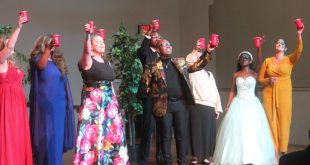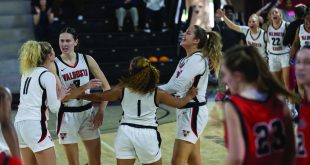Written By: Cole Edwards
Nearly everyone is aware that October is unofficially designated as Breast Cancer Awareness Month, staged as an annual international health campaign. It’s organized by the major breast cancer charities to increase both funds for disease prevention and consciousness of the early detection signs.
This grassroots event has grown so much that even pro football players now regularly wear the ubiquitous pink ribbon symbol for the four or five Sunday games each October.
National Breast Cancer Awareness Month, NBCAM, first began in 1985. At the time, it began as a partnership between two agencies: the American Cancer Society and the pharmaceutical chapter of Imperial Chemical Industries, makers of several anti-breast cancer drugs. NBCAM’s goal in creating this designated month was to help promote mammography as being the most effective safeguard against the disease.
The now iconic pink ribbon was derived from the already-popular red ribbon that represents AIDS awareness. It was first handed out by the Susan G. Komen Foundation in the fall of 1991 to participants in a New York City race benefiting breast cancer survivors.
However, it was not until a couple of years later in 1993 that the pink ribbon was officially established as a symbol.
Alexandra Penney, the editor-in-chief at the time of Self, a women’s health magazine, and Evelyn Lauder, the Senior Corporate VP of the Estée Lauder brand, decided to undertake this endeavor. The two founded the Breast Cancer Research Foundation in 1993.
On the strength of the Estée Lauder brand, the ribbon was first distributed through stores in the New York City area but eventually spread nationwide.
Understanding the explosion of the pink ribbon is as simple as tracing its use as a marketing tool.
Since the color pink is considered to be feminine in western countries, the ribbon serves as a symbol of goodwill toward the primary targets of breast cancer: women. To buy, wear and sponsor pink ribbons and their events are superficial signs of support for the prevention of the disease.
NBCAM is closely associated with Race for the Cure, which held its first race in 1983, two years before the official October designation became permanent. The first race was held in Dallas, Texas, with 800 participants. That number grew steadily until the race was featured in over 100 U.S. cities with 1.3 million participants in 2002.
Race for the Cure has now expanded to over fifty countries outside the U.S.
Though football players are perhaps best-regarded for sporting the pink ribbons, many buildings around the world don pink lights in support of NBCAM. Some of these include landmarks such as the Eiffel Tower, Empire State Building, Constantine’s Arch in Rome and several locations in the downtown Atlanta area.
Workplaces now also regularly hold “pink days” during October where employees are encouraged to wear pink clothing and accessories to work.
One of the most unique “pink days” is the Global Pink Hijab day, begun by a group of high school students in Columbia, Missouri. It serves as a means to remove stereotypes regarding Muslim women by encouraging them to wear pink headscarves as they participate in Race for the Cure.
For more information on the pink ribbon as well as how to get involved in Breast Cancer Awareness Month, visit http://www.nationalbreastcancer.org/breast-cancer-awareness-month.
 The Spectator The independent student newspaper of Valdosta State University
The Spectator The independent student newspaper of Valdosta State University







